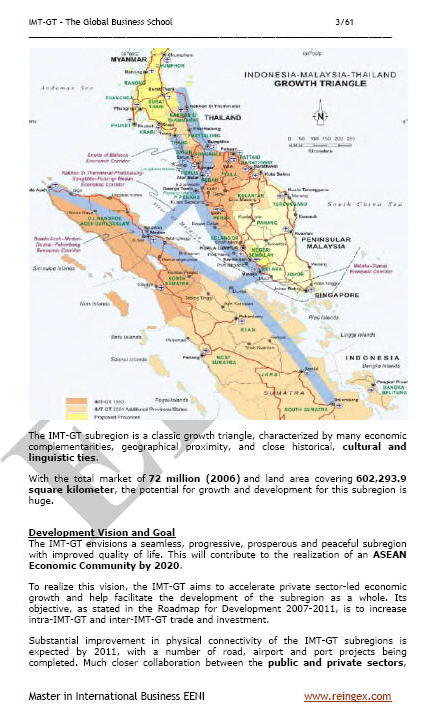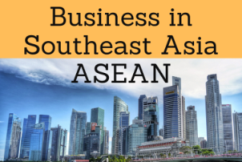Indonesia-Malaysia-Thailand Triangle

Economic Profile of Southern Thailand, Malaysia, Indonesia (Growth Triangle IMT-GT)
- Introduction to the Indonesia-Malaysia-Thailand Growth Triangle (IMT-GT) - Southeast Asia ASEAN
- Structure and goals of the IMT- Growth Triangle
- Sumatra Investment and Trade Survey
- Economic Profile of the provinces of the IMT-Growth Triangle

The Subject “Indonesia-Malaysia-Thailand Growth Triangle (IMT-GT)” belongs to the following Online Programs taught by EENI Global Business School:
Masters: International Business, Foreign Trade.
Masters for the Students of the Indonesia-Malaysia-Thailand Growth Triangle (IMT-GT):  Indonesia,
Indonesia,
 Malaysia,
and
Malaysia,
and  Thailand.
Thailand.
Languages:  or
or
 Triángulo de Crecimiento Tailandia Indonesia Malasia
Triángulo de Crecimiento Tailandia Indonesia Malasia  Triangle de croissance Indonésie Malaisie Thaïlande
Triangle de croissance Indonésie Malaisie Thaïlande  Triângulo Crescimento ASEAN.
Triângulo Crescimento ASEAN.

Sample - Indonesia-Malaysia-Thailand Growth Triangle (IMT-GT)

The Indonesia-Malaysia-Thailand Growth Triangle (IMT-GT) is a subregional cooperation initiative created in 1993 by the governments of Indonesia, Malaysia, and Thailand with the objective to speeding up the economic transformation in the less developed provinces of the IMT-Growth Triangle region.

- The mission of the Growth Triangle is to increase the Foreign Trade and the Foreign direct investment (FDI) opportunities between the members
- The private sector of the region of the Indonesia-Malaysia-Thailand Growth Triangle has played a core function in promoting the economic cooperation
- With a total market of 72 million and a land area covering 602,293 km², the economic growth and development potential for the IMT-GT is immense
- The Indonesia-Malaysia-Thailand Growth Triangle sub-region is characterized by many economic complementarities, geographical proximity, and close historical, cultural, and linguistic ties
The Indonesia-Malaysia-Thailand Growth Triangle consists of:
- Fourteen provinces in Southern Thailand (Krabi, Nakhon Si Thammarat, Narathiwat, Pattani, Phattalung, Satun, Songkhla, Trang, Yala, Chumphon, Ranong, Surat Thani, Phang Nga, and Phuket) where the main religion is Buddhism
- Eight states of Peninsular Malaysia (Kedah, Kelantan, Melaka, Negeri Sembilan, Penang, Perak, Perlis, and Selangor)
- Ten provinces in the island of Sumatra in Indonesia (Aceh, Bangka-Belitung, Bengkulu, Jambi, Lampung, North Sumatra, Riau, Riau Islands, South Sumatra, and West Sumatra)
In Indonesia and Malaysia, the main religion is Islam.
The Asian Development Bank is a development partner of the IMT-GT since 2006. The ASEAN Secretariat is a valuable ally of the Growth Triangle that provides the assistance and linkage to development-.
The Roadmap of the Indonesia-Malaysia-Thailand Growth Triangle (IMT-GT) identifies four economic connectivity corridors as key to increase the international trade, foreign direct investment, and tourism through strengthening the regional connectivity.
Transport Corridors:

(c) EENI Global Business School (1995-2024)
We do not use cookies
Top of this page



